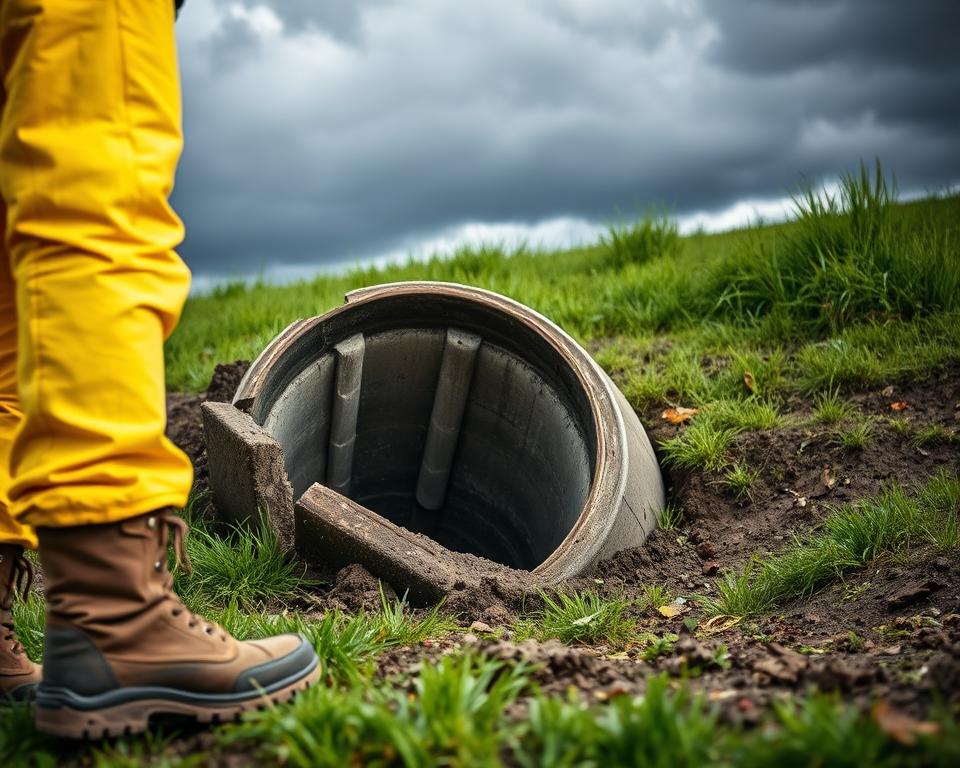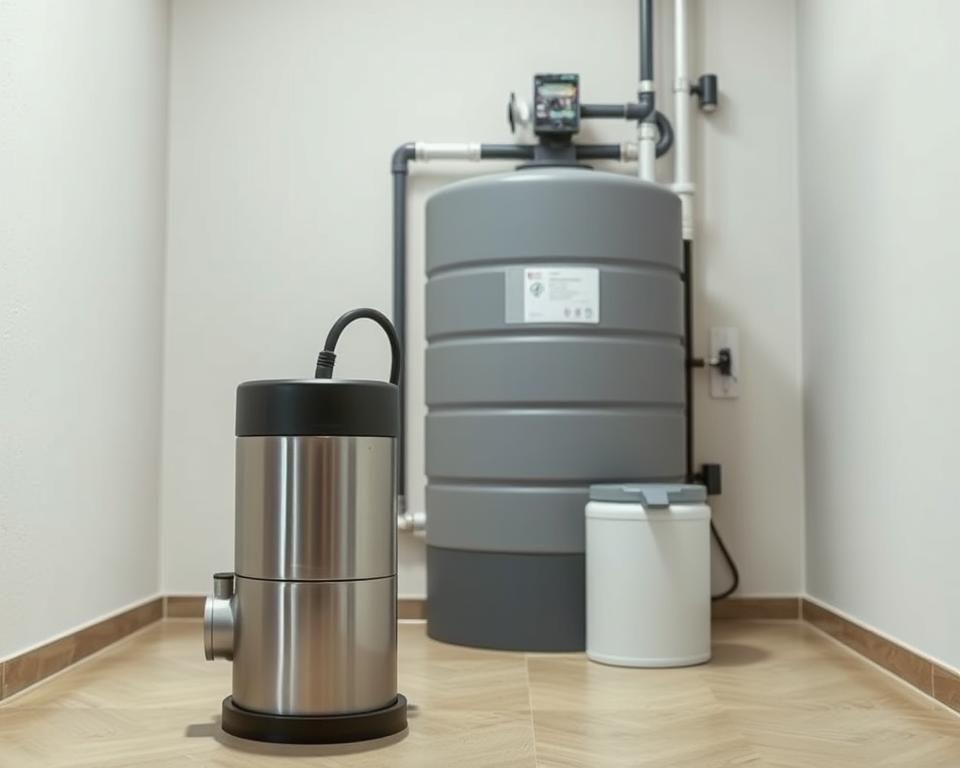Grease Trap Pumping: Keep Your Kitchen Running Smooth
Ever pondered the role of a small device in preventing commercial kitchen plumbing disasters? Grease trap cleaning transcends mere maintenance—it’s essential for efficient dining establishment culinary waste management. These interceptors, crucial for collecting fats, oils, and grease (FOG) produced during food preparation, prevent blockages. Without consistent cleaning, they can clog, leading to costly fixes and service interruptions. Let’s delve into the significance of grease interceptor pumping and its part in ensuring a smooth kitchen functioning, all while adhering to ecological standards.
Understanding Grease Traps and Their Significance
Oil traps are vital for the efficient running of commercial culinary spaces and food processing facilities. They collect grease, fats, and solid waste before they enter the sewer system. This role is key for maintaining culinary hygiene. It’s essential to understand how these interceptors function to ensure they work efficiently and maintain a clean work environment.
What are Oil Interceptors?
A grease trap, also known as a restaurant grease trap cleaning cost, is a device designed to collect fats, oils, and grease (FOG) from effluent. Installed in the plumbing of kitchens or food serving establishments, it prevents these materials from going into the sewer system. This stops clogs or clogs in pipes, preventing expensive repairs and possible hygiene issues.
How Do Grease Traps Work?
The operation of grease traps is based on gravity division. Effluent enters the trap, where heavier particles settle at the base. Meanwhile, lighter grease and oil rise to the surface, forming a layer of FOG. This setup allows clearer water to leave the interceptor and flow into the drainage system.
Regular checking of grease interceptors is key for their best functioning. Upkeep involves taking out accumulated FOG and solids to stop spillage and system breakdown. Correct fats, oils, and grease removal through prompt maintenance makes sure kitchens function smoothly and maintains hygiene.
Typical Problems with Oil Interceptors
Oil traps are vital for keeping culinary spaces clean and operating well, especially in the meal serving industry. Ignoring them can lead to numerous problems that impact functions. Understanding these problems helps in concentrating on drainage system maintenance for improved functionality.
Clogs and Blockages
Clogs and blockages are major concerns with grease interceptors. They often stem from fats, oils, and greases (FOG) buildup. This collection can clog water flow, causing drainage backups. Thus, regular pipe clearing is essential to prevent these clogs. Consistent checks assist spot blockages early, preventing larger problems.
Foul Smells and Insect Invasions
Ignoring grease traps also leads to bad odors and pest invasions. Accumulated organic matter causes unpleasant smells, making the kitchen unpleasant to work in. These smells attract insects, increasing hygiene dangers. A consistent cleaning routine for grease interceptors is crucial to managing meal service sector refuse efficiently. It guarantees a sanitary, pest-free environment, fostering a healthier kitchen environment.
Grease Interceptor Cleaning: Crucial Upkeep for Your Kitchen
In the world of restaurants and business culinary spaces, grease interceptor cleaning is vital for upkeep. Ensuring your grease trap remains in optimal shape is crucial for both functional effectiveness and environmental compliance. It’s vital to know the ideal pumping frequency and to recognize indicators that signal the need for service. This knowledge can significantly reduce costs and save time over time.
Frequency and Scheduling of Pumping
Choosing the correct pumping frequency for grease traps hinges on several elements. The size of the trap and the volume of fats, oils, and grease (FOG) your kitchen produces are important considerations. Generally, it’s recommended to clean grease interceptors every 1 to 3 months. Frequent checks assist in maintaining seamless functioning and compliance to local regulatory standards.
Signs That Your Oil Trap Needs Cleaning
Staying alert for signs that your grease interceptor needs cleaning can prevent major issues. Watch for these signals:
- Slow drainage: If basins empty slower than usual, it could indicate the grease trap is full.
- Regular plumbing clogs: Regular clogs suggest a grease trap having trouble to handle waste amount.
- Foul odors: A unpleasant smell near the trap indicates it’s time for pumping.
Handling these indicators quickly enhances performance and guarantees ecological compliance for dining establishments. Consistent upkeep prevents costly repairs and fosters a hygienic kitchen space.
Advantages of Frequent Grease Interceptor Maintenance
Frequent upkeep of grease interceptors is vital for your kitchen’s effectiveness and functionality. A regular routine for inspections and cleaning avoids interruptions and guarantees a secure, sanitary cooking space. This proactive approach is crucial to a efficient kitchen.
Avoiding Costly Repairs
Proactive maintenance assists kitchen managers spot and fix issues in advance. Regular checks uncover blockages and obstructions, preventing expensive repairs that could halt functioning. Each maintenance visit ensures grease traps function well, reducing the risk of plumbing breakdowns and urgent issues.
Enhancing Kitchen Sanitation
Regular upkeep of grease interceptors enhances kitchen sanitation. It reduces grease and meal fragments, reducing the danger of bad smells and bacteria. A clean grease trap provides a safer cooking space and meets food safety standards, essential for patron contentment. Efficient maintenance has a major beneficial effect on kitchen operations.
| Advantage | Explanation | Impact on Kitchen Operations |
|---|---|---|
| Financial Benefits | Reduces the risk of unplanned plumbing problems that incur high repair expenses. | Ensures consistency of business without unexpected disruptions. |
| Improved Sanitation | Minimizes bad smells and microbes linked to grease buildup. | Creates a sanitary and secure environment for food preparation. |
| Adherence | Fulfills regulatory standards by ensuring cleanliness. | Prevents fines and legal issues due to substandard kitchen sanitation methods. |
Choosing the Best Grease Trap Maintenance Service
Choosing a reliable grease interceptor maintenance service is essential for maintaining optimal performance in dining establishments and business kitchens. It’s important to select a company with broad experience in grease interceptor upkeep. Firms like Oil Trap Cleaning Company guarantee compliance with regional regulations and provide comprehensive cleaning to keep your grease interceptors efficient.
Expertise and Expertise in Offerings
A well-known service boasts a proven history in handling grease interceptors effectively. Their experience in business plumbing services allows them to identify possible problems early. With experienced experts, businesses can expect thorough cleaning and maintenance routines tailored to each culinary space’s individual needs. This approach extends the life of the sewage system.
Ecological Responsibility in Refuse Management
Provider quality isn’t the only factor; environmental compliance is just as important. The right grease interceptor cleaning company prioritizes responsible waste removal practices. Effectively handling the collection and disposal of grease and particles demonstrates a commitment to sustainability. By choosing a service that aligns with these values, businesses can ensure their grease trap maintenance is both effective and eco-friendly.



